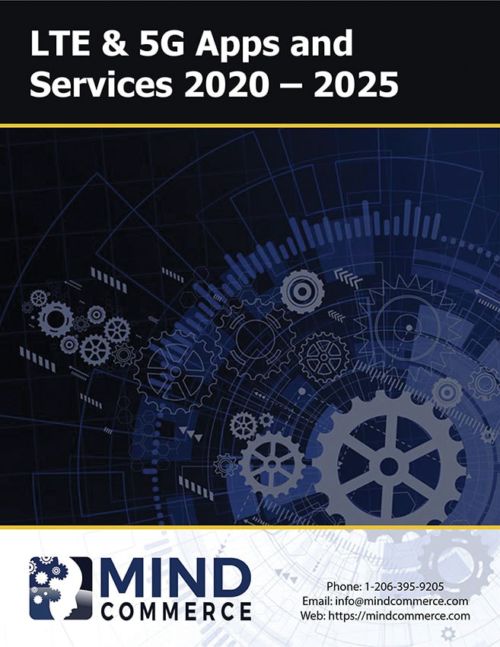Description
The enormous amount of money invested in fifth generation networks necessitates the need to derive a substantial return on investment for infrastructure and support services. Mobile network operators will look to monetization from wholesale services as well as direct-to-customer engagement. In both cases, there is a need for development and deployment of value-added Service applications. A large portion of the 5G VAS market will be operationalized in an OTT model.
Every VAS will demonstrate one or more of the below characteristics. Furthermore, a value-added service will never stand in stark contrast to any of the above characteristics. VAS applications also have a certain time dimension associated with them. Subjectively speaking, a value-added service today becomes a basic service when it becomes sufficiently common place and widely deployed to no longer provide substantive differentiation on a relative basis.
All VAS share the same characteristics:
- Not a form of basic service but rather adds value total service offering
- Stands alone in terms of profitability and/or stimulates incremental demand for core service(s)
- Can sometimes stand alone operationally
- Does not cannibalize basic service unless clearly favorable
- Can be an add-on to basic service, and as such, may be sold at a premium price
- May provide operational and/or administrative synergy between or among other services – not merely for diversification
There are two types of VAS. The first service type are those value-added services that stand alone from an operational perspective. These types of services need not be coupled with other services, but they can be. Many non-voice services fall into this category. They are often provided as an optional service along with voice services, but they could be offered and used by themselves without the voice service. The second, and arguably more numerous and important type of VAS, are those services that do not stand-alone. Instead, this category adds value to existing services. While it seems implicit in the definition of value-added, this is an important principle that makes value-added services stand apart from other services.
5G VAS Market Dynamics
In the pre-5G marketplace, the largest mobile value-added services (VAS) have been OTT-based mobile apps. At the consumer level, we do not anticipate this changing with the introduction of 5G as many applications are enhanced while at the same time there will be many completely new 5G VAS market applications that leverage the unique capabilities afforded by fifth generation cellular technologies. Most notably in terms of the focus of this primarily consumer-focused 5G VAS market report, 5G provides Enhanced Mobile Broadband (eMBB) and Ultra-reliable Low Latency Communications (URLLC).
5G VAS Market Capabilities
5G will be significantly faster than LTE with much lower latency due to faster overall throughput. More specifically, 5G New Radio (5GNR) based on leveraging new Radio Access Network (RAN) equipment based on millimeter wave technology in the microwave spectrum, will enable the 5G VAS market to benefit from significantly higher bandwidth, which will support general mobility applications such as anytime, anywhere that ultra-high-speed Internet access and ultra-high definition video.
The 5G VAS market will also benefit in terms of critical communications by way of ultra-low latency communications. This will be based initially by introduction of 5GNR within the RAN portion of carrier networks, but more substantially by implementation of 5G core network infrastructure. Equally important is integration with Multi-access Edge Computing (MEC). This will be deployed in a manner in which MEC supports 5G to preserve the tremendous throughput and latency improvements that will be gained by using 5G versus LTE.
In cellular networks, MEC is beneficial for LTE, but virtually essential for the 5G VAS market. This is because edge computing facilitates optimization of 5G network resources including focusing communications and computational capacity where it is needed the most. Without MEC, 5G would continue to rely upon back-haul to centralized cloud resources for storage and computing, diminishing much of the otherwise positive impact of latency reduction enabled by 5G.
The 5G VAS market will also be characterized as being highly scalable for IoT. Prior to 5G, IoT relied upon many proprietary, non-cellular means for Wide Area Network (WAN) communications. With the introduction of 5G support for “Massive IoT” via the Machine Communications support capabilities, Machine-to-Machine (M2M) networking will be able to become virtually as large as it needs to be for a given enterprise, network, system, etc. Stated differently, there will be the ability for many more low-power IoT devices with extreme coverage within a metropolitan area.
5G VAS Market Applications
There are many different types of 5G VAS market applications. Some leverage the high bandwidth aspect of 5G whereas others rely more upon lower latency and others require both. Some IoT and/or machine-oriented applications leverage the massive scale of deployment enabled by 5G. A few totable 5G VAS applications covered in this report are mentioned below.
5G VAS Market support of Virtual Reality
Previously encumbered by a combination of technology gaps and consumer readiness issues, the global 5G applications market for immersive apps such as Virtual Reality (VR) is poised for considerable growth, providing abundant opportunities for service providers, content developers, and ecosystem component providers. Coupled with the deployment of gigabit Ethernet fiber, VR will be transformed within the 5G VAS market, leading to a fully immersive experience with haptic capabilities becoming embedded in many applications.
5G VAS Market support of Private Wireless
Private networks leverage LTE and 5G for internal/onsite coverage as well as intra-company communications between business locations including smart buildings, factories, and other facilities. Spectrum to deploy private LTE and 5G networks includes licensed, unlicensed, and shared to regionally dedicated. Private wireless market deployments will differ greatly based on whether they conform to a carrier-owned/controlled model or to one based on enterprise/industrial ownership and control.
In the case of the former, the carrier will be required to provision and administer apps and/or allow access by third parties, such as OTT service providers. In the case of the latter, the enterprise or industrial customer will manage their own 5G VAS market applications, or more likely, hire their own third-party team to manage on their behalf.
Core 5G VAS Market support of Voice over 5G
Despite the industry emphasis on many new data-related capabilities materializing, the Vo5G market will remain a critical function, but will diminish in importance as a stand-alone service. While the 5G VAS market will support Ultra High Definition (UHD) audio communications, streaming video and ultra-clear voice communication are not anticipated to be the most important overall economic impacts of the technology.
Instead, the main value proposition will be Voice over 5G (Vo5G) embedded with many advanced applications and services including unified communications, real-time communications (including WebRTC), augmented reality, virtual reality (VR), and mixed reality, tele-robotics control, and various IoT enabled applications and services.
Voice quality gained significant ground with VoLTE with the deployment of 4G LTE networks. The Vo5G market will build on those advancements as evolved voice systems leverage combined 5G core network elements along with IP Multimedia Systems (IMS), VoLTE enhancements, 5G Evolved Packet Core (EPC) and other 5G New Radio (5GNR) 5G radio access network equipment such as smart antennas.
5G VAS Market Report
This report assesses the 5G VAS market including major companies, strategies, and offerings. The report evaluates the market for applications by type, technology, capability set, use case, and industry verticals. The report analyzes applications that rely upon the precursor to 5G, LTE, as well as WiFi in support of eMBB, URLLC, and mMTC type applications. The report evaluates mobile network operator 5G VAS market strategy including devices, deployment, and operationalization.
The report also evaluates mobile operator provided VAS applications such as Rich Communication Services (RCS). Initially launched with LTE, RCS will continue within the 5G VAS market as it is viewed by most carriers as table-stakes as they combat the threat of voice and texting competition in the OTT space. However, mobile network operators continue to be challenges with billing for RCS on a differentiated basis as compared to data as a whole. This is a particular challenge in a roaming environment.






